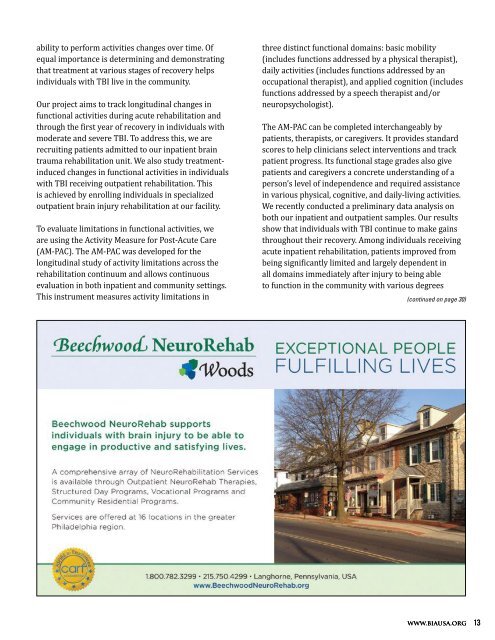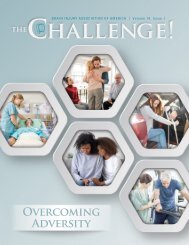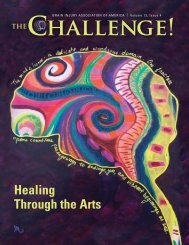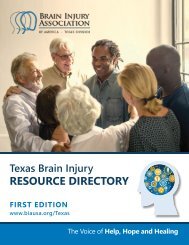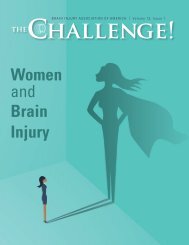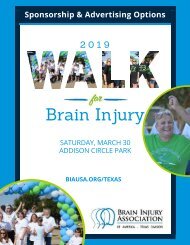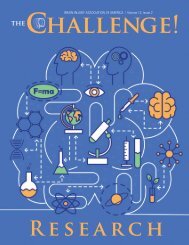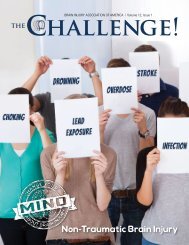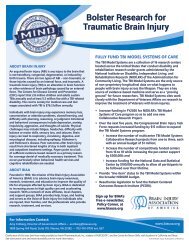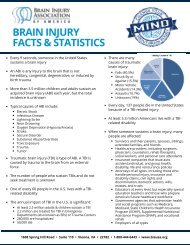THE Challenge 2019 Vol. 13 Iss. 3 Finding Cures for Brain Injury
Finding Cures for Brain Injury
Finding Cures for Brain Injury
Create successful ePaper yourself
Turn your PDF publications into a flip-book with our unique Google optimized e-Paper software.
ability to per<strong>for</strong>m activities changes over time. Of<br />
equal importance is determining and demonstrating<br />
that treatment at various stages of recovery helps<br />
individuals with TBI live in the community.<br />
Our project aims to track longitudinal changes in<br />
functional activities during acute rehabilitation and<br />
through the first year of recovery in individuals with<br />
moderate and severe TBI. To address this, we are<br />
recruiting patients admitted to our inpatient brain<br />
trauma rehabilitation unit. We also study treatmentinduced<br />
changes in functional activities in individuals<br />
with TBI receiving outpatient rehabilitation. This<br />
is achieved by enrolling individuals in specialized<br />
outpatient brain injury rehabilitation at our facility.<br />
To evaluate limitations in functional activities, we<br />
are using the Activity Measure <strong>for</strong> Post-Acute Care<br />
(AM-PAC). The AM-PAC was developed <strong>for</strong> the<br />
longitudinal study of activity limitations across the<br />
rehabilitation continuum and allows continuous<br />
evaluation in both inpatient and community settings.<br />
This instrument measures activity limitations in<br />
three distinct functional domains: basic mobility<br />
(includes functions addressed by a physical therapist),<br />
daily activities (includes functions addressed by an<br />
occupational therapist), and applied cognition (includes<br />
functions addressed by a speech therapist and/or<br />
neuropsychologist).<br />
The AM-PAC can be completed interchangeably by<br />
patients, therapists, or caregivers. It provides standard<br />
scores to help clinicians select interventions and track<br />
patient progress. Its functional stage grades also give<br />
patients and caregivers a concrete understanding of a<br />
person’s level of independence and required assistance<br />
in various physical, cognitive, and daily-living activities.<br />
We recently conducted a preliminary data analysis on<br />
both our inpatient and outpatient samples. Our results<br />
show that individuals with TBI continue to make gains<br />
throughout their recovery. Among individuals receiving<br />
acute inpatient rehabilitation, patients improved from<br />
being significantly limited and largely dependent in<br />
all domains immediately after injury to being able<br />
to function in the community with various degrees<br />
(continued on page 30)<br />
www.biausa.org <strong>13</strong>


